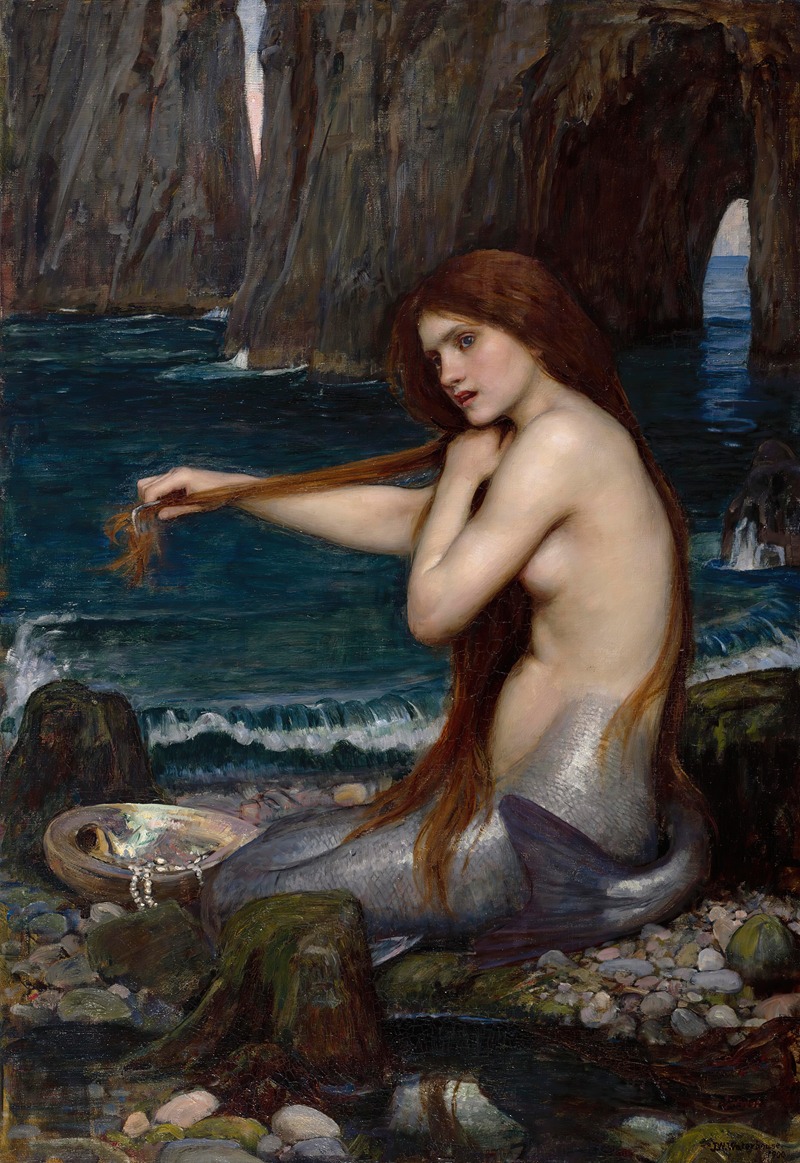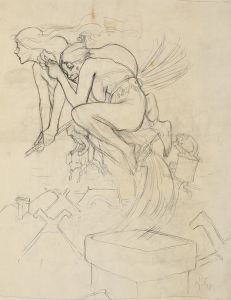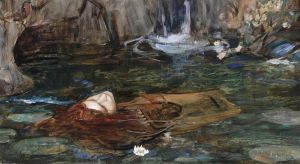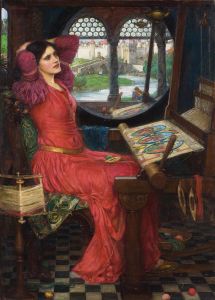
A Mermaid
A hand-painted replica of John William Waterhouse’s masterpiece A Mermaid, meticulously crafted by professional artists to capture the true essence of the original. Each piece is created with museum-quality canvas and rare mineral pigments, carefully painted by experienced artists with delicate brushstrokes and rich, layered colors to perfectly recreate the texture of the original artwork. Unlike machine-printed reproductions, this hand-painted version brings the painting to life, infused with the artist’s emotions and skill in every stroke. Whether for personal collection or home decoration, it instantly elevates the artistic atmosphere of any space.
"A Mermaid" is a painting by the British artist John William Waterhouse, completed in 1900. Waterhouse was a prominent figure in the Pre-Raphaelite movement, known for his depictions of mythological and literary subjects. This particular work exemplifies his fascination with the mythical and the enchanting.
The painting portrays a mermaid, a mythical sea creature with the upper body of a woman and the tail of a fish, sitting on a rock by the sea. She is depicted combing her long, flowing hair, a common motif in mermaid iconography, which symbolizes beauty and allure. The mermaid's expression is contemplative, adding a sense of mystery and depth to the image.
Waterhouse's use of color and light in "A Mermaid" is notable. The palette is dominated by cool blues and greens, reflecting the aquatic setting and creating a serene, almost otherworldly atmosphere. The texture of the mermaid's scales and the wet rocks is rendered with meticulous detail, showcasing Waterhouse's skill in capturing the natural world.
The background of the painting features a calm sea with gentle waves, enhancing the tranquil mood of the scene. The horizon is faintly visible, suggesting a vast, open ocean that adds to the sense of isolation and introspection of the mermaid. This setting is typical of Waterhouse's work, where the environment often plays a crucial role in conveying the emotional tone of the piece.
"A Mermaid" was exhibited at the Royal Academy of Arts in London in 1901, where it received considerable attention. The painting is now part of a private collection, making it less accessible to the public compared to some of Waterhouse's other works. However, it remains a significant example of his contribution to the Pre-Raphaelite movement and his ability to blend mythological themes with realistic detail.
Waterhouse's interest in mermaids and other mythical creatures can be seen in several of his other works, such as "The Siren" (1900) and "Hylas and the Nymphs" (1896). These paintings often explore themes of enchantment, danger, and the supernatural, reflecting the broader Victorian fascination with mythology and folklore.
In summary, "A Mermaid" by John William Waterhouse is a captivating painting that combines the artist's technical skill with his interest in mythological subjects. The serene yet mysterious depiction of the mermaid, along with the detailed and atmospheric setting, makes it a notable work within Waterhouse's oeuvre and the broader context of Pre-Raphaelite art.


















